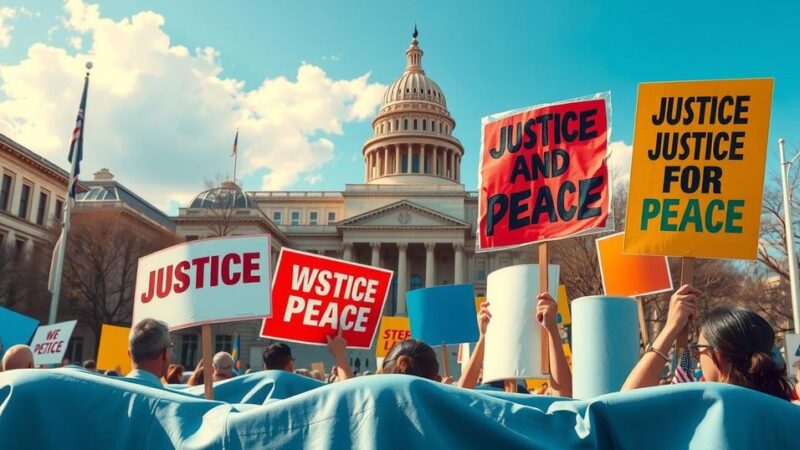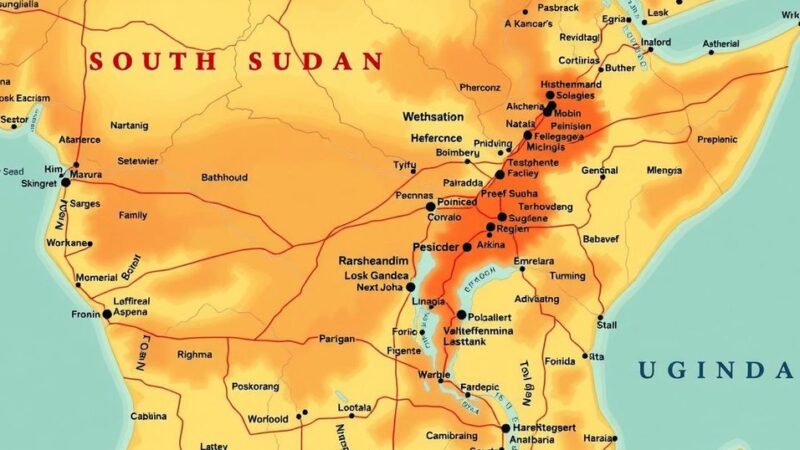Syria has sworn in a new transitional government, marking a significant shift following the removal of the Assad family. This diverse Cabinet aims to restore stability, functioning under a secretary-general instead of a prime minister. The government faces the task of reconciliation, especially as it lacks representation from Kurdish forces. Despite challenges, it aims to solicit international support and lift sanctions while addressing the country’s urgent humanitarian crises.
On March 30, 2025, Syria inaugurated its new transitional government, nearly four months following the removal of the Assad family from power. According to the Associated Press, the government aims to restore stability in the war-torn nation. This Cabinet, comprising 23 members from diverse religious and ethnic backgrounds, symbolizes Syria’s first administration within a five-year transitional phase, succeeding the interim government formed post-Assad’s ousting in early December.
Significantly distinct from prior administrations, this new government will operate without a prime minister, functioning instead under the leadership of a secretary-general, as stipulated by the temporary constitution endorsed by interim President Ahmad al-Sharaa earlier this month. The formation of this government coincided with Eid al-Fitr, featuring several newcomers among its ranks; notably, the foreign and defence ministries retained their incumbents from the interim cabinet, while the new Interior Minister Anas Khattab previously led the intelligence department.
In an inaugural speech, President al-Sharaa proclaimed, “The formation of a new government today is a declaration of our joint will to build a new state,” showcasing the administration’s commitment to unification. Defence Minister Murhaf Abu Qasra emphasized his intention to forge a “professional army from the people and for the people.”
However, the Cabinet notably lacks representation from the US-backed Kurdish-led Syrian Democratic Forces (SDF) and the autonomous administration in northeast Syria. Despite this, a significant agreement was made between al-Sharaa and SDF commander Mazloum Abdi in Damascus, facilitating a nationwide ceasefire and the inclusion of SDF forces into the Syrian army.
Among the newly appointed ministers is Hind Kabawat, a Christian activist opposed to Assad since the conflict’s inception, now serving as Minister of Social Affairs and Labour. Additionally, Raed Saleh, former head of the White Helmets, has been appointed as Minister for Emergency Disasters. Kurdish politician Mohammed Terko has taken the role of Minister of Education, while Mohammed al-Bashir, leader of Syria’s interim government post-Assad, will focus on energy and reconstruction efforts in the Ministry of Energy.
The government’s principal aim is to conclude the ongoing war and restore peace to the nation. Recent violent incidents in Syria’s coastal region have resulted in over 1,000 fatalities, predominantly impacting the Alawite sect, to which Assad belonged, contrasting with the Sunni majority in control of many rebel factions.
By appointing members from various religious and ethnic affiliations, including an Alawite and female representation, al-Sharaa endeavors to convince Western nations of the new government’s dedication to an inclusive political process. The diversification in leadership is strategically designed to encourage the lifting of economic sanctions imposed on Assad’s regime over the last decade. Currently, the UN reports that 90% of the Syrian populace lives below the poverty line, facing critical food aid shortages amid the ongoing crisis.
Prior to the government’s announcement, the US State Department issued a warning regarding a heightened risk of attacks during the Eid al-Fitr celebrations, citing potential threats aimed at embassies and Syrian public institutions in Damascus. The advisory indicated that such attacks could manifest through armed assaults, lone assailants, or explosive devices, further complicating the nation’s security landscape.
The inauguration of Syria’s new transitional government represents a pivotal moment in the nation’s political evolution following the removal of Bashar Assad. This diverse Cabinet aims to foster stability and inclusivity, crucial for restoring peace amid ongoing challenges. By prioritizing the formation of a professional military and addressing the pressing needs of the population, the administration seeks both international recognition and an alleviation of economic sanctions. The complexities of uniting various factions and the current security threats underscore the challenges that lie ahead for Syria’s leadership and its citizens.
Original Source: indianexpress.com






